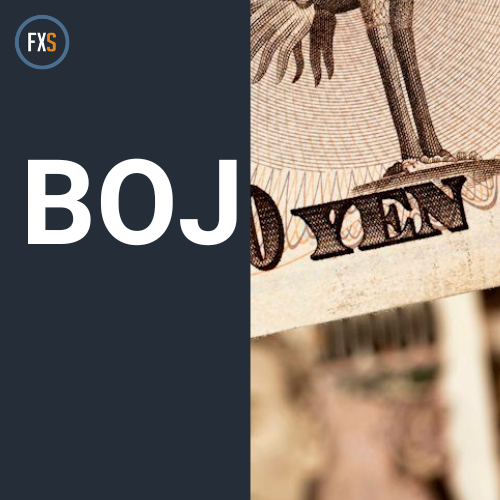GBP/JPY moves away from multi-month top, slides below 153.00 ahead of BoJ’s Ueda
- GBP/JPY attracts sellers for the second successive day amid the post-BoJ JPY strength.
- The BoJ rate-hike uncertainty and reduced bets for more BoE rate cuts to limit losses.
- Traders now look to the post-meeting conference for some meaningful opportunities.
The GBP/JPY cross drifts lower for the second straight day on Thursday and retreats further from over a three-month peak, around the 199.80 region touched the previous day. Spot prices slide below the 198.00 mark after the Bank of Japan (BoJ) announced its decision during the Asian session, albeit remain confined in a familiar range held since the beginning of this week.
As was widely anticipated, the BoJ decided to leave monetary policy settings unchanged on the back of the political uncertainty after Sunday's snap elections in Japan. In the accompanying statement, the BoJ reiterated that it will continue to raise policy rates if the economy and prices move in line with the forecast. This, along with fears of possible government intervention and nervousness ahead of the November 5 US presidential election, drive haven flows towards the Japanese Yen (JPY) and exerts some pressure on the GBP/JPY cross.
The British Pound (GBP), on the other hand, is weighed down by the emergence of some US Dollar (USD) dip-buying, which turns out to be another factor dragging spot prices lower. That said, doubts over the BoJ's ability to hike interest rates further, along with diminishing odds for more aggressive interest rate cuts by the Bank of England (BoE), could offer some support to the GBP/JPY cross. This, in turn, warrants some caution for bearish traders and before confirming that spot prices have topped out in the near term.
Investors now look forward to the post-meeting presser where comments by BoJ Governor Kazuo Ueda should influence the JPY and provide some impetus to the GBP/JPY cross in the absence of any relevant macro releases from the UK on Thursday.
Bank of Japan FAQs
The Bank of Japan (BoJ) is the Japanese central bank, which sets monetary policy in the country. Its mandate is to issue banknotes and carry out currency and monetary control to ensure price stability, which means an inflation target of around 2%.
The Bank of Japan embarked in an ultra-loose monetary policy in 2013 in order to stimulate the economy and fuel inflation amid a low-inflationary environment. The bank’s policy is based on Quantitative and Qualitative Easing (QQE), or printing notes to buy assets such as government or corporate bonds to provide liquidity. In 2016, the bank doubled down on its strategy and further loosened policy by first introducing negative interest rates and then directly controlling the yield of its 10-year government bonds. In March 2024, the BoJ lifted interest rates, effectively retreating from the ultra-loose monetary policy stance.
The Bank’s massive stimulus caused the Yen to depreciate against its main currency peers. This process exacerbated in 2022 and 2023 due to an increasing policy divergence between the Bank of Japan and other main central banks, which opted to increase interest rates sharply to fight decades-high levels of inflation. The BoJ’s policy led to a widening differential with other currencies, dragging down the value of the Yen. This trend partly reversed in 2024, when the BoJ decided to abandon its ultra-loose policy stance.
A weaker Yen and the spike in global energy prices led to an increase in Japanese inflation, which exceeded the BoJ’s 2% target. The prospect of rising salaries in the country – a key element fuelling inflation – also contributed to the move.
Forex News
Keep up with the financial markets, know what's happening and what is affecting the markets with our latest market updates. Analyze market movers, trends and build your trading strategies accordingly.



















